
An open-wheel car is a car with the wheels outside the car's main body, and usually having only one seat. Open-wheel cars contrast with street cars, sports cars, stock cars, and touring cars, which have their wheels below the body or inside fenders. Open-wheel cars are built both for road racing and oval track racing. Open-wheel cars licensed for use on public roads, such as the Ariel Atom, are uncommon, as they are often impractical for everyday use.

Charles Whiting was a British motorsports director. He served as the FIA Formula One Race Director, Safety Delegate, Permanent Starter and head of the F1 Technical Department, in which capacities he managed the logistics of each F1 Grand Prix, inspected cars in parc fermé before a race, enforced FIA rules, and controlled the lights that start each race.
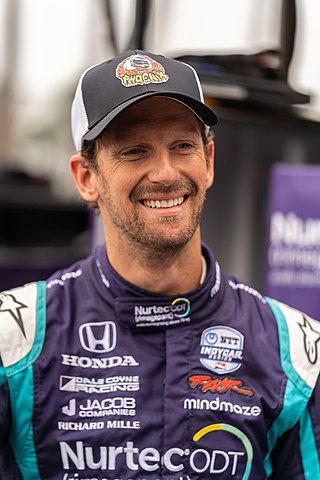
Romain David Jeremie Grosjean is a French and Swiss professional racing driver, competing under the French flag. He currently drives in the NTT IndyCar Series, driving the No. 77 Chevrolet for Juncos Hollinger Racing team. Grosjean previously spent nine full-time seasons in Formula One for a variety of teams, picking up 10 podiums, all with Lotus.

Roy Nissany is an Israeli racing driver who most recently competed in the 2023 Formula 2 Championship with PHM Racing by Charouz. He is the son of former racing driver Chanoch Nissany.

Max Emilian Verstappen is a Belgian and Dutch racing driver competing in Formula One under the Dutch flag for Red Bull Racing, with whom he is the 2021, 2022, and 2023 World Champion.

Charles Marc Hervé Perceval Leclerc is a Monégasque racing driver, currently racing in Formula One for Scuderia Ferrari. He won the GP3 Series championship in 2016 and the FIA Formula 2 Championship in 2017.
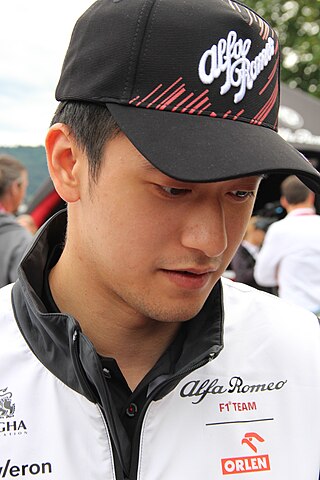
Zhou Guanyu is a Chinese racing driver who currently competes in Formula One for Stake F1 Team Kick Sauber. He is the first, and so far the only, Chinese driver to start a World Championship Formula One race. He competed in the FIA Formula 2 Championship for UNI-Virtuosi Racing from 2019 to 2021, having finished 3rd in the 2021 campaign.
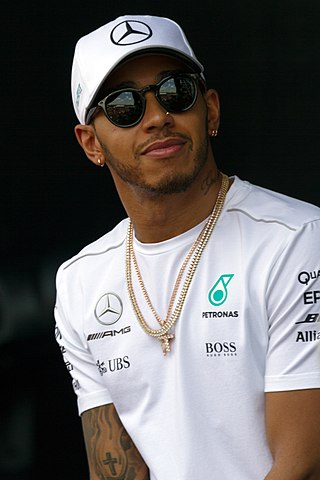
The 2018 FIA Formula One World Championship was the motor racing championship for Formula One cars and the 69th running of the Formula One World Championship. Formula One is recognised by the governing body of international motorsport, the Fédération Internationale de l'Automobile (FIA), as the highest class of competition for open-wheel racing cars. Drivers and teams competed in twenty-one Grands Prix for the World Drivers' and World Constructors' championship titles.

The 2018 FIA Formula 2 Championship was the fifty-second season of the second-tier of Formula One feeder championship and also second season under the moniker of FIA Formula 2 Championship, a motor racing championship for Formula 2 cars that is sanctioned by the Fédération Internationale de l'Automobile (FIA). It is an open-wheel racing category that serves as the second tier of formula racing in the FIA Global Pathway. The category run in support of the 2018 FIA Formula One World Championship, with each of the twelve rounds running in conjunction with a Grand Prix. It was the first FIA Formula 2 season to feature a new chassis and engine package.

The 2018 Australian Grand Prix was a Formula One motor race held on 25 March 2018 in Melbourne, Victoria. The race was contested at the Melbourne Grand Prix Circuit and was the first round of the 2018 FIA Formula One World Championship. The race marked the 83rd race in the combined history of the Australian Grand Prix – which dates back to the 100 Miles Road Race of 1928 – and the 23rd time the event was held at the Albert Park circuit.
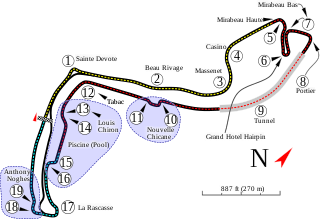
The 2018 Monaco Grand Prix was a Formula One motor race that was held on 27 May 2018 at the Circuit de Monaco, a street circuit that runs through the Principality of Monaco. It was the 6th round of the 2018 FIA Formula One World Championship, the 76th time the Monaco Grand Prix had been held, and the 65th time it had been a round of the Formula One World Championship since the inception of the series in 1950. It was the last victory for Daniel Ricciardo until the 2021 Italian Grand Prix.

The 2018 British Grand Prix was a Formula One motor race held on 8 July 2018 at the Silverstone Circuit in Silverstone, United Kingdom. The race was the 10th round of the 2018 Formula One World Championship. It marked the 73rd running of the British Grand Prix, the 69th time that the race had been run as a World Championship event, and the 52nd time that the World Championship event had been held at the Silverstone Circuit.

The 2019 German Grand Prix was a Formula One motor race which was held on 28 July 2019 at the Hockenheimring in Germany. The race was the 11th round of the 2019 Formula One World Championship and marked the 78th running of the German Grand Prix, and the 64th time the race had been run as a World Championship event since the inaugural season in 1950.

The Ferrari SF90 is a Formula One racing car designed and constructed by Scuderia Ferrari to compete during the 2019 Formula One World Championship. The chassis was designed by Mattia Binotto, Enrico Cardile, Fabio Montecchi and David Sanchez with Corrado Iotti leading the powertrain design. It was driven by Sebastian Vettel and Charles Leclerc, who was making his debut for Scuderia Ferrari. The car made its competitive debut at the 2019 Australian Grand Prix.
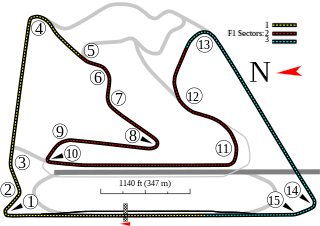
The 2020 Bahrain Grand Prix was a Formula One motor race that took place over 57 laps on 29 November 2020 on the 'Grand Prix Circuit' configuration at the Bahrain International Circuit in Sakhir, Bahrain. The race was the fifteenth round of the 2020 Formula One World Championship. It was the sixteenth time that the Bahrain Grand Prix has been run as a round of the Formula One World Championship.

The 2020 British Grand Prix was a Formula One motor race held on 2 August 2020 at the Silverstone Circuit in Silverstone, United Kingdom. It was the fourth round of the 2020 Formula One World Championship. The event was the seventy-first running of the British Grand Prix as part of the World Championship since 1950. The race was the first of two consecutive Formula One races at Silverstone with the 70th Anniversary Grand Prix following a week later. The defending race winner from the 2019 event, Lewis Hamilton, won the Grand Prix, his third consecutive win of the 2020 season, and Mercedes's fourth.

The 2021 British Grand Prix was a Formula One motor race held on 18 July 2021 at the Silverstone Circuit in Northamptonshire, England. It was the tenth round of the 2021 Formula One World Championship and also featured the first ever "sprint qualifying" event in F1 - a new format run on the Saturday of the race weekend over a distance of 100 kilometres (62 mi). 3 points were awarded to the winner of the Sprint, 2 to 2nd place and 1 to 3rd place. The results of the sprint qualifying decided the grid for the race on Sunday.

The 2021 Italian Grand Prix was a Formula One motor race held on 12 September 2021 at Autodromo Nazionale Monza. It was the 14th round of the 2021 Formula One World Championship and the second Grand Prix in Italy in the season, after the Emilia Romagna Grand Prix on 18 April. The 53 lap race was won by McLaren driver Daniel Ricciardo, who capitalised on a good front-row start and an accident between Max Verstappen and Lewis Hamilton to take the race lead. Ricciardo was joined by Lando Norris in second with Mercedes' Valtteri Bottas in third. It was Ricciardo's first victory since the 2018 Monaco Grand Prix, and so far remains his latest race victory. In addition, the race was McLaren's first victory since Jenson Button's victory at the 2012 Brazilian Grand Prix, McLaren's first 1-2 finish since the 2010 Canadian Grand Prix, and also McLaren's first win at Monza since the 2012 Italian Grand Prix. As of 2023, this is the final Grand Prix appearance for Robert Kubica.

The 2022 British Grand Prix was a Formula One motor race held on 3 July 2022 at the Silverstone Circuit in Northamptonshire, England.

The 2023 FIA Formula One World Championship was a motor racing championship for Formula One cars, which was the 74th running of the Formula One World Championship. It was recognised by the Fédération Internationale de l'Automobile (FIA), the governing body of international motorsport, as the highest class of competition for open-wheel racing cars. The championship was contested over twenty-two Grands Prix, which were held around the world. It began in March and ended in November.



















